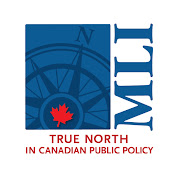#nlp #naturallanguageprocessing
Natural Language Processing (NLP) is a branch of artificial intelligence (AI) concerned with the interaction between computers and humans using natural language. It involves the processing and understanding of human language by computers to perform tasks such as text analysis, language translation, sentiment analysis, speech recognition, and more. NLP aims to bridge the gap between human communication and computer understanding, enabling machines to interpret, analyze, and generate human language in a meaningful way.
Applications of NLP are diverse and span across various industries and domains, including:
Language Translation: NLP powers machine translation systems like Google Translate, enabling translation between different languages.
Sentiment Analysis: NLP algorithms can analyze text data to determine the sentiment expressed, helping businesses gauge public opinion, customer feedback, and social media sentiments.
Information Extraction: NLP can extract structured information from unstructured text data, such as named entity recognition, extracting entities like names, dates, organizations, etc., from documents.
Chatbots and Virtual Assistants: NLP enables chatbots and virtual assistants to understand and respond to user queries in natural language, providing automated customer support, information retrieval, and task automation.
Text Summarization: NLP techniques can summarize long documents or articles, providing condensed versions while retaining essential information.
Question Answering Systems: NLP powers question answering systems like IBM Watson, which can understand and answer questions posed in natural language.
Speech Recognition: NLP enables computers to convert spoken language into text, facilitating applications like virtual assistants (e.g., Siri, Alexa) and speech-to-text transcription services.
Text Classification: NLP algorithms can classify text data into predefined categories or topics, facilitating tasks like spam detection, sentiment classification, and content categorization.
Information Retrieval: NLP techniques are used in search engines to understand user queries and retrieve relevant information from vast amounts of text data.
Grammar Correction and Language Generation: NLP algorithms can correct grammar errors in text and generate human-like language, which is useful for applications like auto-correct in word processors and generating natural language responses in conversational systems.
These are just a few examples of how NLP is applied in various fields to automate tasks, extract insights from text data, and enhance human-computer interaction. As NLP technologies continue to advance, their applications are expected to grow and evolve further.










![How AI is Secretly Running Your Life! 2024 [Video]](https://aimarketingshowcase.com/wp-content/uploads/2024/10/mp_533082_0_0jpg.jpg)


